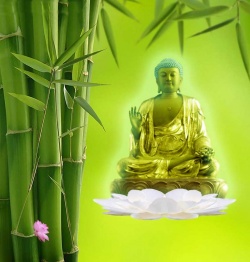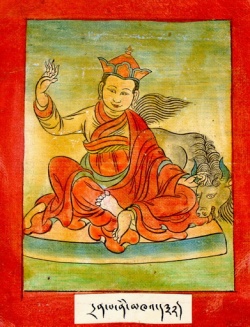The Gurudharma on Bhiksuni Ordination in the Mulasarvastivada Tradition
I. The Gurudharma On Bhiksuni Ordination in Different Vinayas
According to tradition, the gurudharmas, "principles to be respected," were stipulated by the Buddha as a pre-condition for granting his foster mother Mahaprajapati Gautami the higher ordination.
The different Vinaya texts report that by accepting these principles to be respected Mahaprajapati Gautami became the first bhiksuni (nun), marking the starting point for the coming into being of an order of bhiksunis.
While the different Vinayas agree in mentioning a set of eight such gurudharmas, the sequence in which these principles are listed varies considerably, as does their actual formulation. (3)
The themes broached by these eight principles to be respected concern matters of monastic etiquette, such as stipulating that a bhiksuni should behave respectfully even towards a junior bhiksu (monk), and the carrying out of legal acts.
One legal act mentioned in all Vinaya lists of the eight gurudharmas is the procedure for conducting bhiksuni ordination.
As a starting point for subsequent discussion, in what follows the different versions of this gurudharma that appear in the canonical Vinayas are translated from the Chinese, Sanskrit and Pali originals;
(4) the Tibetan version is taken up in more detail in the second part of the present paper.
The translations below are given in alphabetical order according to the school affiliation of the respective Vinaya.
The numbering given in brackets reflects the position of this particular gurudharma within the whole set of eight.
I.1 Translation
Dharmaguptaka Vinaya (no. 4): "A siksamana (probationer) who has trained in the precepts should request the higher ordination from the community of bhiksus." (5)
Lokottaravada-Mahasamghika Vinaya (no. 2): "A girl of eighteen years, having been instructed in the training and having completed this training for two years, should seek the higher ordination from both communities." (6)
Mahasamghika Vinaya (no. 2): "Having trained for two years in the precepts, she receives higher ordination in both communities." (7)
Mahisasaka Vinaya (no. 4): "A siksamana who has trained in the precepts for two years should receive the higher ordination in both communities." (8)
Mulasarvastivada Vinaya (no. 1): "The bhiksunis should seek from the bhiksus the going forth and the higher ordination, the becoming of a bhiksuni ." (9)
Sarvastivada Vinaya (no. 2): "A bhiksunishould request the higher ordination from the community of bhiksus." (10)
Sammitiya Vinaya (1): "A bhiksuni should certainly seek the gaining of the higher ordination from the community of bhiksus." (11)
Theravada Vinaya (no. 6): "A siksamana who has trained for two years in six principles should seek for higher ordination from both communities." (12)
I.2 Comparative study
Comparing the canonical Vinaya versions of the gurudharma stipulation concerning how bhiksuni ordination should be carried out brings to light two significant differences.
One of these two differences concerns the period to be observed as a probationer, or siksamana.
While the Dharmaguptaka Vinaya version simply speaks of a siksamana who has trained in the precepts, the Mahasamghika, Mahisasaka, and Theravada Vinaya versions note that her probationary period lasts for two years.
The Lokottaravada-Mahasamghika Vinaya also indicates that she should be eighteen years old.
The Theravada Vinaya provides still further detail, as it mentions that during these two years the siksamana has to observe six rules.
Alongside these variations in the degree to which the details of the probationary training are introduced, perhaps the most prominent difference among these versions is that the formulations of this gurudharma in the Mulasarvastivada, Sarvastivada, and Sammitiya Vinayas do not mention the need to observe a probationary period at all.



